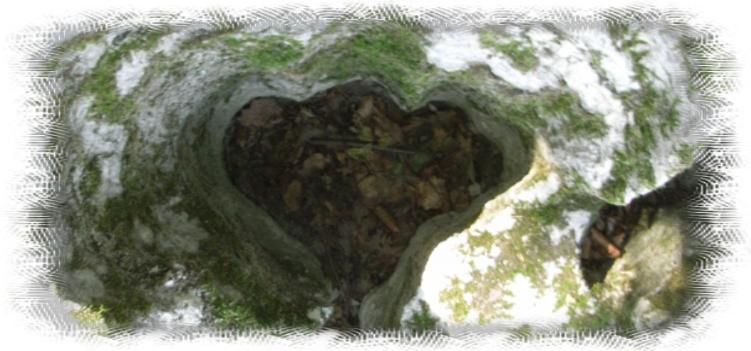1. Geologischer Lehrpfad - Gipsschlotten EarthCache
1. Geologischer Lehrpfad - Gipsschlotten
-
Difficulty:
-

-
Terrain:
-

Size:  (not chosen)
(not chosen)
Please note Use of geocaching.com services is subject to the terms and conditions
in our disclaimer.

 1. Geologischer Lehrpfad
1. Geologischer Lehrpfad
- Gipsschlotten -
 |
 |
Die Gipsschlotten sind ein 0,02ha großes Naturdenkmal, welches 2001 durch die Stadt Jena als Geotop ausgewiesen wurde.
1908 wurden diese interessanten Gipsfelsen vermutlich im Rahmen der Terrassierung des Schulgeländes der Brauckmann-Villa "zufällig freigelegt". Karl Brauckmann (* 30. November 1862, Hengsen, † 28. März 1938, Jena) informierte darauf hin den preussischen Landesgeologen, der diese dann im Sommer 1908 fotografierte.
Sie wurden später in den Erläuterungen zum Blatt Jena im Jahre 1928 und in einem Heft des Thüringer Höhlenvereins von 1931 (Heß v. Wichdorff) abgebildet. Im Laufe der Zeit geriet das Areal aber wieder in Vergessenheit und verwilderte. Erst 1986 wurde das Gelände wieder so bearbeitet, dass der ursprüngliche Zustand des Gipsfelsens gut erkennbar wurde und in den Jahren 2005/2006 erfolgte der Großteil der Freilegung der Schlotten, so wie sie heute zu sehen sind. |
The gypsum-hollows are a 0,02ha tall natural monument, which is declarated as geotope by the city of Jena since 2001.
These interesting gypsum-rocks were probably discovered in 1908 while digging the schoolarea of the Brauckmann-Villa. Karl-Brauckmann (* 30. November 1862, Hengsen, † 28. March 1938, Jena) informed the geologist of Prussia, who took photos in summer 1908.
Later the hollows were printed in 2 publications of Jena in 1928 and the Thuringian cave community (Heß v. Wichdorff) in 1931. In the course of time they fell into oblivion and became overgrown.
Until 1986, the area was digged again, so that the former situation of the gypsum-rock became visible and in 2005/2006 there was the main work that resulted the gypsum-hollows you can see today. |

Die Gipsschlotten sind der zweite Aufschluss des Geologischen Lehrpfades. Unterhalb des Weges zeigt sich die Obergrenze der schwach wasserlöslichen Fossilfreien Gipse (Salinarrötfolge des Oberen Buntsandsteins). Diese sind mit spaltenartigen Auswaschungen durchzogen (sogenannte "Schlotten"). In diesem Aufschluss war kaum Überdeckung vorhanden, es entstand ein kleiner Erdfall.
Charakteristisch sind der runde Umriss und die steilen Wände der Gipsfelsen. Die Erosion zeigt sich zum Beispiel an kesselförmigen Auskolkungen, von denen mehrere Kesselchen hintereinander aufgereiht sind. Dies belegt in dem gezeigten Fall die hohen Fließgeschwindigkeiten und Durchflüsse in turbulenter Strömung. Man kann gut eine Abrisskante erkennen, die später ausgelaugt wurde. Hier konnten unbehindert durch Windungen oder Hindernisse große Wassermengen, wie in einem Rohr, fließen. Die bankigen Gipse im Aufschluss bildeten die Grenze zum darüber folgenden Pelitröt (Oberer Buntsandstein). |
The gypsum-hollows are the second outcrop of the first Jenaer nature trail. Underneath the path is the upper limit of the light water soluble fossil free gypsums (salinferous formation of the upper red sandstone). In the rock you can see several wash-outs - the hollows. At this outcrop there was nearly no overlap and a small depression was formed.
The round contour and abrupt walls are characteristic. The erosion is visible at cauldron formed scourings, which are stringed one after another. It shows the high stream velocity and the flows in turbulent tides. You can see a tearing edge, which was leached out later. A high volume of water was able to flow without having any twists or other barricades through it like through a pipe. The gypsums at the outcrop built up the barrier to pelitic rock (Upper Red Sandstone). |
| Eine der schönsten Auslaugungsformen des Gipsfelsens wird in Anlehnung an die Blattform des Gingkobaumes als "Gingkoschlotte" bezeichnet. |
One of the most beautiful leachings is the so called maidenhair tree hollow according to the leaf shape. |

Mache bitte ein Bild von dir und deinem GPSr vor den Gipsschlotten.
Um zu loggen, beantworte folgende Fragen vor Ort:
A. Welcher fossilfreie Gips ist der erstgenannte in der Grafik?
B. Welche größte Ausdehnung hat die Ginkgoschlotte am tiefsten Punkt (in Zentimeter) - Bandmaß etc. bitte mitnehmen!
C. Auf der Infotafel ist unten rechts ein Datum in der Form X/YZ zu sehen. Ermittle YZ
|
Please take a picture with you and your GPSr in front of the hollows.
To log, please answer the following questions:
A. Which fossil free gypsum is the first named in the graphic?
B. How many centimetres wide is the biggest dimension of the maidenhair tree hollow at the deepest ground? (take a measuring tape or similar with you!)
C. On the infoboard is a date in the lower right corner in the form X/YZ. Find out YZ
|
Sende mir die Antworten über mein GC-Profil. Du kannst direkt loggen. Wenn etwas nicht stimmt, melde ich mich.
Alternativer Service:
Erstelle dir aus den Antworten eine E-Mail-Adresse in der Form AntwortA-AntwortB-AntwortC@gmx.net (also wenn die Antworten z.B. A=Selenit, B=16 und C=87 sind, so sollte die Adresse selenit-16-87@gmx.net heißen). Vergiss bitte nicht deinen GC-Namen in die Mail zu schreiben.
Wenn deine Antworten stimmen, erhälst du eine automatische Antwort-E-Mail |
Please send me your answers via my GC-profile. You can log instantly. If something is wrong, I will get in contact with you.
Alternative service:
Build up a mail-adress with the answers in the form AnswerA-AnswerB-AnswerC@gmx.net (e.g. the answers are A=selenit, B=16 and C=87, the mail adress should look like this: selenit-16-87@gmx.net). Don't forget to send me your GC nickname.
If your answers are correct you get a mail back via auto responder. |
| Viel Spaß wünscht |
Have Fun |

Quellen:
Stadt Jena
Conrad Linde
Additional Hints
(No hints available.)